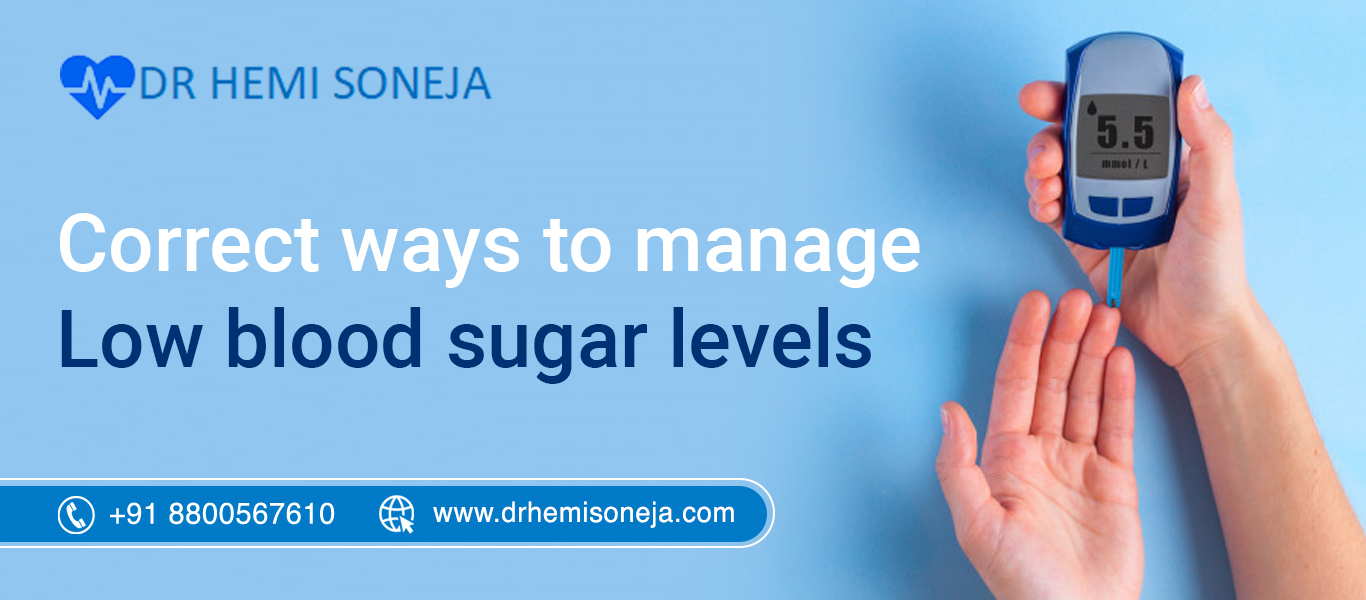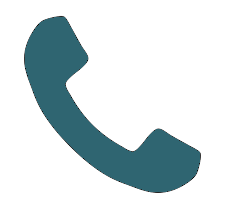The cells in our body utilize blood glucose from the foods we consume to gain energy which in turn ensure the proper functioning of various organs. Hypoglycemia or Low blood sugar levels is dangerous because it will hamper the energy supply to cells and hinder the normal functioning of organs such as the heart, lungs, brain, etc. We will also discuss low blood sugar level symptoms in this blog. As low blood sugar hampers system functions of the body, consequential effects like sweating, fatigue, hunger, nausea, etc are indicators of the hypoglycemic condition.
Though hypoglycemia can happen with anyone, it is predominantly seen in people with diabetes (Hyperglycemia). In nondiabetic people, self-care for low blood sugar involves restoration of the sugar levels to normalcy with foods and drinks with high sugar content. However, Long-term treatments for hypoglycemia require identification of the exact cause for treating accordingly.
Aftermath of Severe Hypoglycemia
Recovery from severe hypoglycemia may take some time. It’s essential to-
- Monitor blood sugar levels regularly
- Follow up with healthcare providers to assess the cause and adjust treatment plans
- Consider preventive measures to avoid future occurrences of severe low blood sugar
- Preventing Severe Hypoglycemia
- While severe hypoglycemia can be frightening, taking preventive measures can significantly reduce the risk. Consider the following:-
- Regularly monitor blood sugar levels
- Adjust medication doses or insulin as advised by healthcare providers
- Ensure a consistent and balanced meal plan.
Communicate openly with healthcare providers about any concerns or challenges faced in managing blood sugar levels.
When You Have Low Blood Sugar Level?
Fasting blood sugar of 70 milligrams per deciliter (mg/dL) or below is considered hypoglycemic and such patients need immediate treatment.
In diabetes conditions, the production of insulin is not sufficient and so, external medications or insulin is administered.
Factors that cause low blood sugar levels in people with diabetes :
- Delay or skipping of meals – When you are on medication for diabetes or take insulin injections, then you have to make sure that you neither skip your meal nor medication. Otherwise, it may lead to hypoglycemia.
- Excessive exercise – Exercise is essential for a diabetic person to maintain blood glucose levels. Exercising more than normal or exercising without proper food intake or exercising by skipping/delay in taking meals can lead to a decrease in blood sugar levels.
- Alcohol consumption – Too much alcohol intake can block the liver to pass out stored glucose into the bloodstream causing hypoglycemia.
- More insulin than required – When insulin taken is more than required and not enough food is provided to the body or physical exertion more than needed is done, it can cause low blood sugar levels.
If lowering of blood sugar is occurring frequently, consulting a diabetes specialist for the required change and treatment is a must.
Hypoglycemia is common even among people who do not have diabetes.
Factors that cause low blood sugar in non-diabetic people :
- Reactive hypoglycemia or postprandial hypoglycemia can happen after meals high in sugar. Such foods stimulate the production of more insulin causing low blood sugar.
- Fasting or not eating for a long time can lower sugar levels.
- Severe medical conditions like problems with the liver, kidney, pancreas, heart, hormones, adrenal glands, etc can potentially cause hypoglycemia.
- Hypoglycemia can be caused by certain medications used in the treatment of various diseases like malaria, etc.
What causes low blood sugar levels?
People with diabetes often observe a sudden dip in their blood glucose levels due to the following.
- Effects of certain medicines such as sulfonylureas, glinides, antiviral medicines, or their overdose like taking too much insulin
- Low carbohydrate intake in the meal
- Skipping or delaying a meal
- Sudden or intense exercising
- Alcohol consumption.
However, there is no particular reason for low blood sugar levels, but it can occur even in people without diabetic conditions.
Low blood sugar symptoms
Some of the noticeable symptoms of low blood sugar levels or hypoglycemia includes:
- Excessive sweating
- Fatigue or tiredness
- Feeling dizzy or faintness
- Feeling hungry
- Feeling shaky or trembling
- Palpitations
- Lips tingling
- Getting irritated or anxious
- Mood swings
- Looking pale and weak
- Blurred vision
- Difficulty in concentrating
- Confusion
- Sleepiness
- Fits or seizures
Low blood sugar during sleep can cause headaches, tiredness, or excess sweating while you wake up in the morning.
What happens when blood sugar is too low
Low blood sugar is also known as a condition called hypoglycemia. When the blood sugar level drops down, the body is energy deficient, which can eventually slow down the body’s cell activities and metabolism. Thus leading to excessive fatigue, dizziness, and trembling, making one feel the need to have instant energy releasing foods.
What level of low blood sugar is dangerous
A blood sugar level lesser than 70 mg/dL (3.9 mmol/L) is considered low blood sugar or hypoglycemia. Fasting blood sugar levels higher than 126 mg/dL (7 mmol/L) is considered high blood sugar or hyperglycemia. Both hypo and hyperglycemia levels can be alarming and require necessary measures to manage blood sugar levels.
Low blood sugar or hypoglycemia is when the blood sugar in the body is less than 70 mg/dL (3.9 mmol/L). However, lower than 54 mg/dL (3.0 mmol/L) is dangerous and may require immediate medical attention.

Why is a low blood sugar level dangerous
When the blood sugar level drops down, the cells do not receive the required amount of glucose to perform their activities and one can observe the below changes & low sugar level symptoms.
- Increased heartbeat and irregular heartbeat
- Fatigue and weakness
- Pale and dull skin.
- Shaking or trembling of hands and legs
- Dizziness, Headaches, Nausea
- Feeling Anxious
- Sweating
- Hungry
- Numbness of lips, tongue or cheek
- The mind gets confused
- Difficult to perform routine tasks
- Low concentration levels
- Problems relating to vision like blurred vision
- Seizures
These low sugar level symptoms are warning signs of internal damage to the organs. Sometimes, low sugar levels can be dangerous and life threatening as it can cause seizures leading to coma or even death.
How is Hypoglycemia Treated
Extremely low sugar levels can be below 55 mg/DL. At this stage, self care for low blood sugar levels becomes paramount. In such cases, treatment options include :
- Injectable Glucagon: Glucagons are available in the form of injections that can be administered immediately with proper assistance and guidance from your diabetes specialist doctor who will recommend the right dose accordingly.
- Glucose tablets: If the person gets unconscious, it may take 15 minutes for him/her to get back to consciousness after injectable glucagons are administered. Later,15-30 grams of fast-acting carbohydrates available in the form of tablets and gels can be given to immediately cater for the energy needs of the body.
When the person can swallow, drink and eat, foods with high glucose content can be given.
What are the best things to eat when your blood sugar level is low
Hypoglycemia can be treated and managed immediately through food. The best things to eat when your blood sugar is low are :
- Drinks with fast-acting sources of sugar – Glucose and fructose are simple carbohydrates that can be utilized easily and quickly by the body for immediate energy. Drinks such as soft drinks, fruit juices, tender coconut, etc have high glucose and fructose.
- Foods with long-acting sources of sugar – Sugar is the most commonly used simple carbohydrate. They get into the bloodstream quickly and give energy. Some of the foods with high sugar include glucose biscuits, candies, chocolates, fruits, sweets, ice cream, raisins etc.
How can I prevent Low blood sugar level
If you are diabetic and have had hypoglycemia, talking with your diabetes specialist can help you check or change the diabetes treatment plan. Some of the ways to prevent low blood sugar are as follows :
- Checking your blood glucose levels – Sometimes, people fail to recognize the symptoms of hypoglycemia leading to hypoglycemia unawareness. Checking the blood glucose levels regularly can help manage both hyper and hypoglycemia.
- Taking regular meals and snacks – If you are diabetic, it is necessary to avoid any kind of fasting. It is advised to have small and frequent meals which can help you provide enough nutrition and energy throughout the day.
- Avoid alcohol consumption- To prevent lowering sugar levels and ensuring proper functioning of the liver, consumption of any alcoholic beverage should be avoided.
- Exercise – Regular exercise is good. Modulating the workouts according to your food intake or having a healthy diet according to your exercise regime will help prevent the occurrence of hypoglycemia.
The 15-15 Rule: Managing Low Blood Sugar
When dealing with low blood sugar, swift action is crucial. The 15-15 Rule is a simple and effective approach to managing low blood sugar levels. Here’s how it works:–
Recognize the Symptoms- Low blood sugar symptoms can vary but may include sweating, fatigue, dizziness, shaking, hunger, and confusion. It’s essential to be aware of these signs to take prompt action.
Consume 15 Grams of Fast-Acting Carbohydrates- Quickly address low blood sugar by consuming 15 grams of fast-acting carbohydrates such as:
- Glucose tablets or gel
- Fruit juice (about 4 ounces)
- Regular soda (not diet)
- Honey or sugar (1 tablespoon)
- Candies or raisins (about 15 pieces)
Wait for 15 Minutes– After consuming the fast-acting carbohydrates, wait for 15 minutes. This allows your body to absorb the glucose and raise blood sugar levels. Be patient during this time.
Check Blood Sugar Levels Again– After the 15-minute wait, check your blood sugar levels. If they haven’t risen to a safe range (usually above 70 mg/dL), repeat the process by consuming another 15 grams of fast-acting carbohydrates and rechecking in another 15 minutes.
Follow Up with a Balanced Meal or Snack– Once your blood sugar levels stabilize, it’s crucial to follow up with a balanced meal or snack. This helps sustain your blood sugar and prevents it from dropping again.
When to Use the 15-15 Rule?
The 15-15 Rule is particularly effective for managing mild to moderate hypoglycemia. It’s important to note that if you’re experiencing severe low blood sugar or if symptoms persist, seek immediate medical attention.
Various Options For Treating Severely Low Blood Sugar
- Recognizing Severe Low Blood Sugar– Severe low blood sugar, also known as hypoglycemia, requires immediate attention and a different approach to management. Symptoms of severe low blood sugar may include confusion, seizures, unconsciousness, or the inability to consume food or drink.
- Emergency Actions for Severe Hypoglycemia– In cases of severe low blood sugar, follow these emergency actions:-
- Call for Emergency Assistance– If the person is unconscious or unable to consume food or drink, call for emergency medical assistance immediately. Severe hypoglycemia is a medical emergency that requires professional intervention.
- Administer Glucagon– For individuals with diabetes, glucagon injection can be administered if they have become unconscious or are unable to consume carbohydrates. Glucagon helps raise blood sugar levels by prompting the release of glucose stored in the liver.
- Seek Medical Attention– After administering glucagon or calling for emergency assistance, seek prompt medical attention. It’s crucial to determine the underlying cause of severe hypoglycemia and receive appropriate medical care.
Take Away
Hypoglycemia is a condition where low amounts of glucose in the blood can deprive the cells of energy to perform their activities causing dysfunction of organs. Restoration of normal glucose levels through self care is the only way to manage hypoglycemia.
At Hemi soneja Clinic, you will get the right suggestions, individual treatment schedule of medications, diet and physical activity that would facilitate the management of low blood sugar for both diabetic and non-diabetic people.
10. FAQ’s
1. What causes low blood sugar without diabetes?
Some of the causes of hypoglycemia in non-diabetics include:
- Effect of certain medications,
- Excess alcohol intake,
- Hypothyroidism,
- Side-effects of weight-loss surgery,
- Kidney, liver, or pancreatic issues,
- Certain genetic disorders,
- Anorexia Nervosa- An eating disorder characterised by excessively low body weight.
2. What to eat when blood sugar is low?
When the blood sugar levels are low, you will need to bring back the sugar levels to normal by taking in foods that give you instant energy or raise blood sugars quickly. Generally, sugar or sugary food such as candies, chocolates, glucose drinks, honey, raisins, icecreams, glucose tablets, or injections can act quickly to pump up sugar and energy requirements within the body.
3.What are the low blood sugar symptoms without diabetes?
Low blood sugar signs in non-diabetic people include:
- Blurred vision or changes in vision
- Dizziness or lightheadedness
- Fatigue
- Pounding heartbeat or palpitations
- Excess sweating
- Headache
- Nausea
- Feeling hungry
- Anxiety, Irritability
- Confusion and concentration difficulties
4.What to do when blood sugar is low?
If you have low blood sugar level or hypoglycemia symptoms,
- You will need to have a high sugar concentrated drink or foods (Fast-acting sugars) to satiate your low sugar levels.
- Take a blood test 10 minutes after taking fast-acting sugar foods. If levels seem low, treat again with high-sugar drinks or foods, followed by a blood check after 10 minutes.
- Have a main meal or a snack with slow-releasing carbohydrate foods such as bread, toast, biscuits, milk, or any fruit.
Consult your diabetes specialists if you often observe hypoglycemia symptoms and inform them to get proper diabetic treatment and care.



